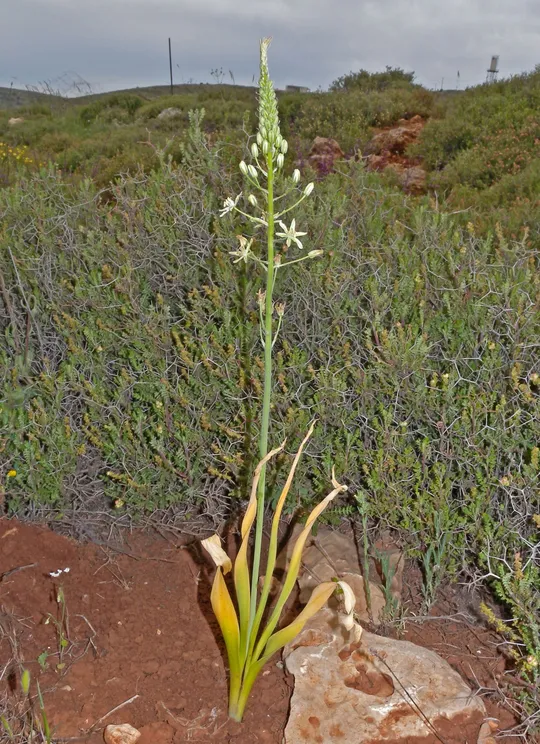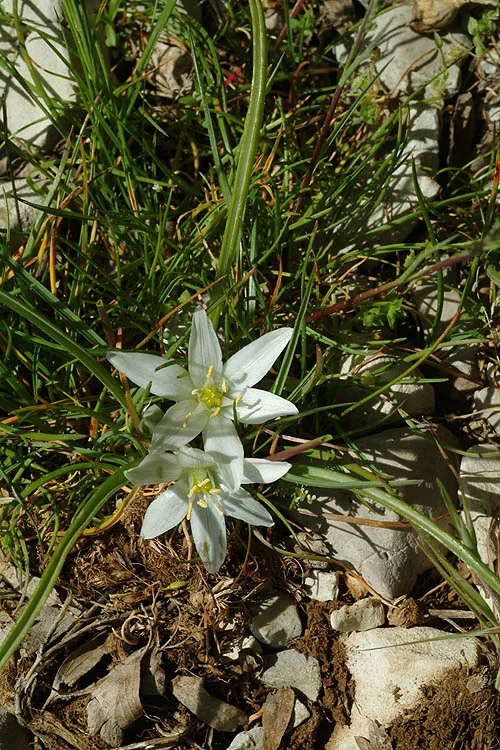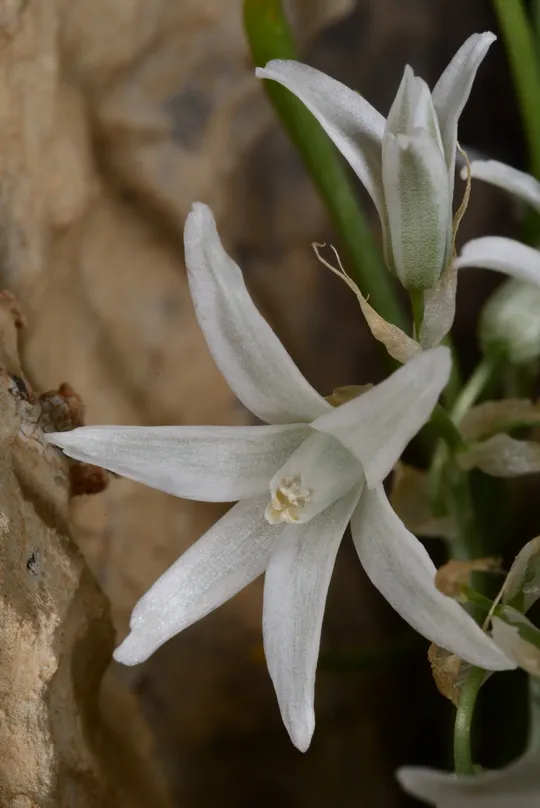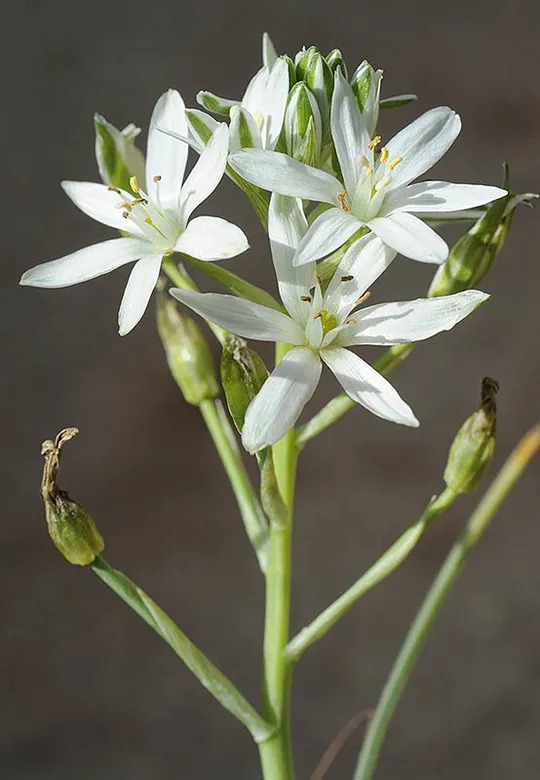Ornithogalum cuspidatum
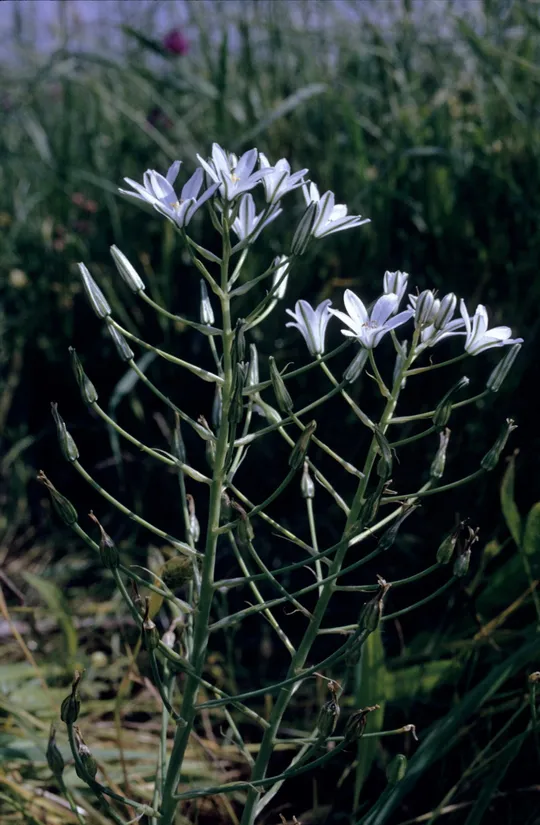
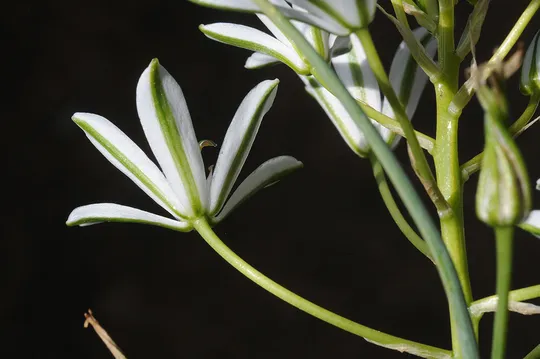
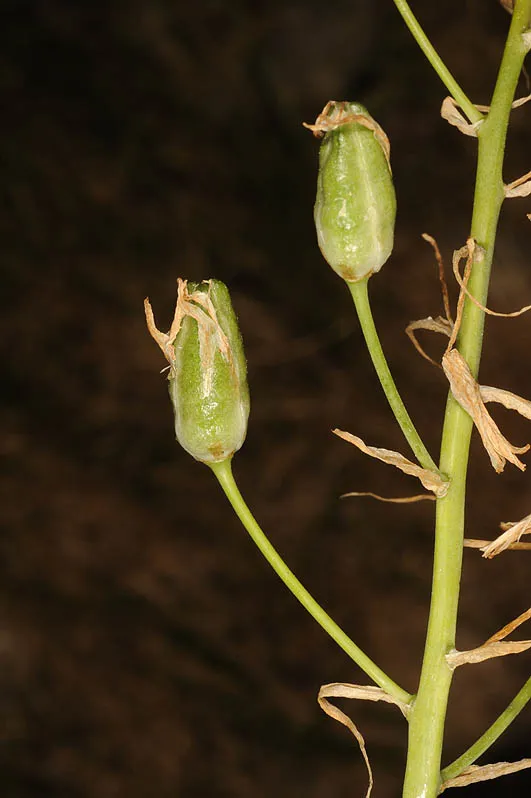
Ornithogalum platyphyllum is limited to
the southern Golan Heights, to four adjacent sites in the Nov-Ramat Magshimim-Natur
area.The species is found at an estimated five sites in Israel.
Herbaceous vegetation in areas flooded in winter, on
basaltic soils. In Israel, it grows in the company of perennial grains, Cynara
syriaca and many other geophytes. In the Flora Palaestina the species is noted
as growing on hills (Feinbrun, 1986), but all the Jerusalem Herbarium sheets confirm
that the plant grows on plains that are flooded in winter in the southern Golan
Heights.
The classification
of the species in the genus Ornithogalum
in the Mediterranean region
and in neighboring regions is complex. Except for a few species that have distinct
identifying signs (e.g. O. umbellatum that is characterized by
leaves with a white vein), there are groups of species that have a narrow range
and are very close, whose identifying signs are vague. O.
cuspidatum is identified by its pyramidal inflorescence,
its size and habitat. The other species close to O. cuspidatum grow in dry rocky habitats. These include O.
lanceolatum – a winter plant with broad leaves and a dense
almost sessile inflorescence; O. montanum
– a relatively small plant with a sparse inflorescence and glabrous leaves found
mainly on the western slopes of Israel's central mountain range; O.
eigii (montanum) with a pyramidal inflorescence,
but with ciliate leaves, that are mainly characteristic of the transition zone.
In the Flora of Iraq, O. platyphyllum appears as a synonym of O. cuspidatum,
a plant of the Quercus forests and fields. In the IPNI database it is
listed as a synonym of O. montanum. New research
is required to clarify the status of this species and related species in the
Middle East. The plant given the status of an independent species here, because
it has a unique inflorescence and a characteristic habitat.
·
Ornithogalum platyphyllum grows in only one
region on a small number of sites.
·
Population size – the species appears
in small groups with few plants.
·
The Golan Heights plant populations
grow in a cluster of adjacent sites that are disjunct from the species concentrations
in more northerly countries. A random catastrophic event could destroy all of
the adjacent populations leaving them with no ability to regenerate from close
sources.
·
O. platyphyllum– is protected in
the Nov Swamp
Iris Reserve.
·
There is a lack of information about
the threat status of O.
platyphyllum in its Middle Eastern range.
Detailed surveys
of the southern Golan Heights should be conducted to estimate the size of the
populations and their situation and learn about the biology of the species. A
management and conservation program should be formulated based on these
findings.
Ornithogalum platyphyllum grows in northern
Israel (Golan Heights), Lebanon, Syria, Turkey, northern Iraq, and Iran. In the
Flora of Turkey, the species is also noted from Armenia and Azerbaijan (Cullen,
1984). In the Flora of Syria and Lebanon the species is not mentioned at all
(Mouterde, 1970).
Ornithogalum
platyphyllum is
an extremely rare geophyte of winter-flooded basaltic soil in the southern
Golan, which grows in a small number of adjacent sites, fragmented from the
species concentration in more northerly countries. O. platyphyllum is at the southern limit of its range in the southern Golan Heights.
Assessing its status requires studying its biology and conducting additional
surveys.
Cullen, J. 1984. In Ds (ed.). Flora of Turkey. Vol 8. pp. 236-237.
Current Occupancy Map
| 1000 squre meter pixel | 5000 squre meter pixel | 10000 squre meter pixel | |
|---|---|---|---|
| number of observations | 0 | 0 | 0 |
| in total pixels | 0 | 0 | 0 |
| Family | Liliaceae |
| Classification | On the endangered species list |
| Ecosystem | Mediterranean humid |
| Chorotype | Eastern Mediterranean |
| Conservation Site | The Swamps Iris Reserve near Hispin |
| Rarity |
1
5
6
|
|---|---|
| Vulnerability |
0
2
4
|
| Attractiveness |
0
1
4
|
| Endemism |
0
0
4
|
| Red number |
1
4.2
10
|
| Peripherality | N |
| IUCN category | DD EW EX LC CR EN VU NT |
| Threat Definition according to the red book | Endangered |
 Based on:
Based on:
